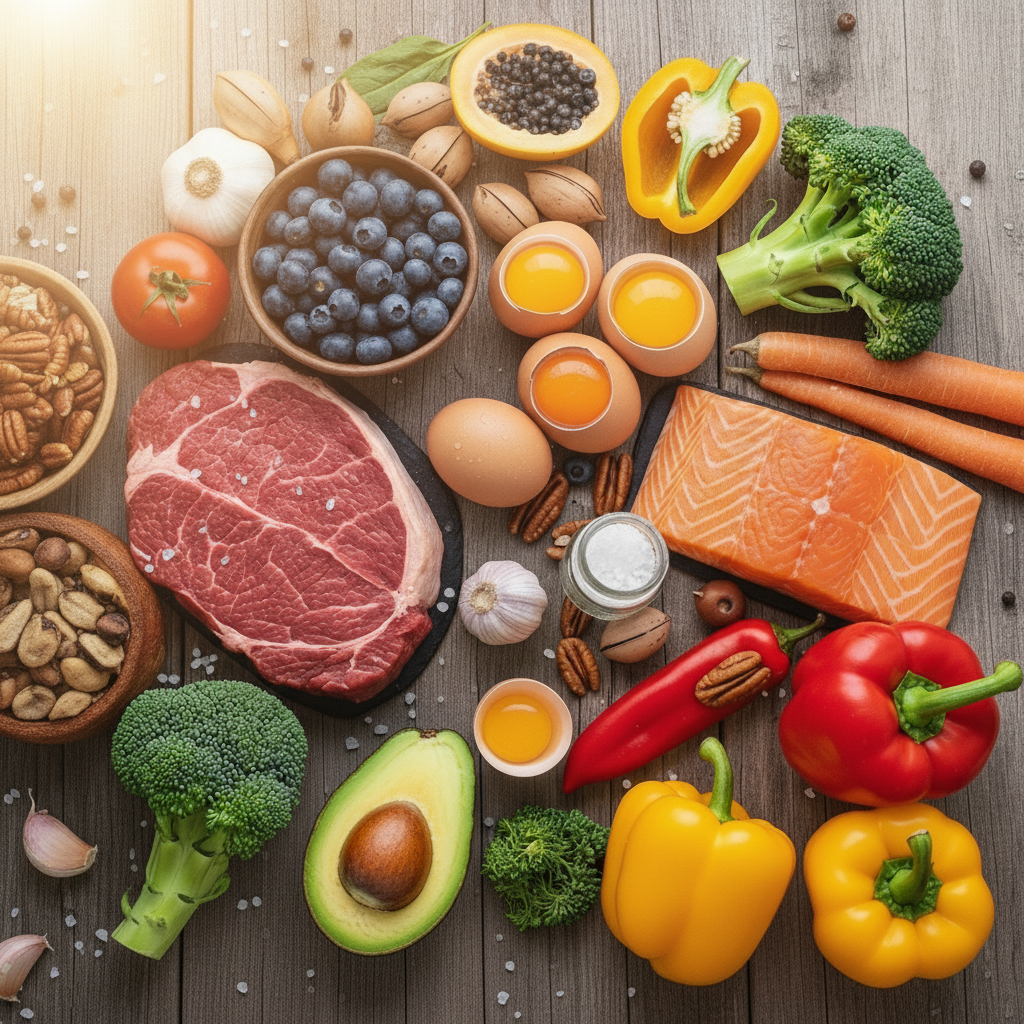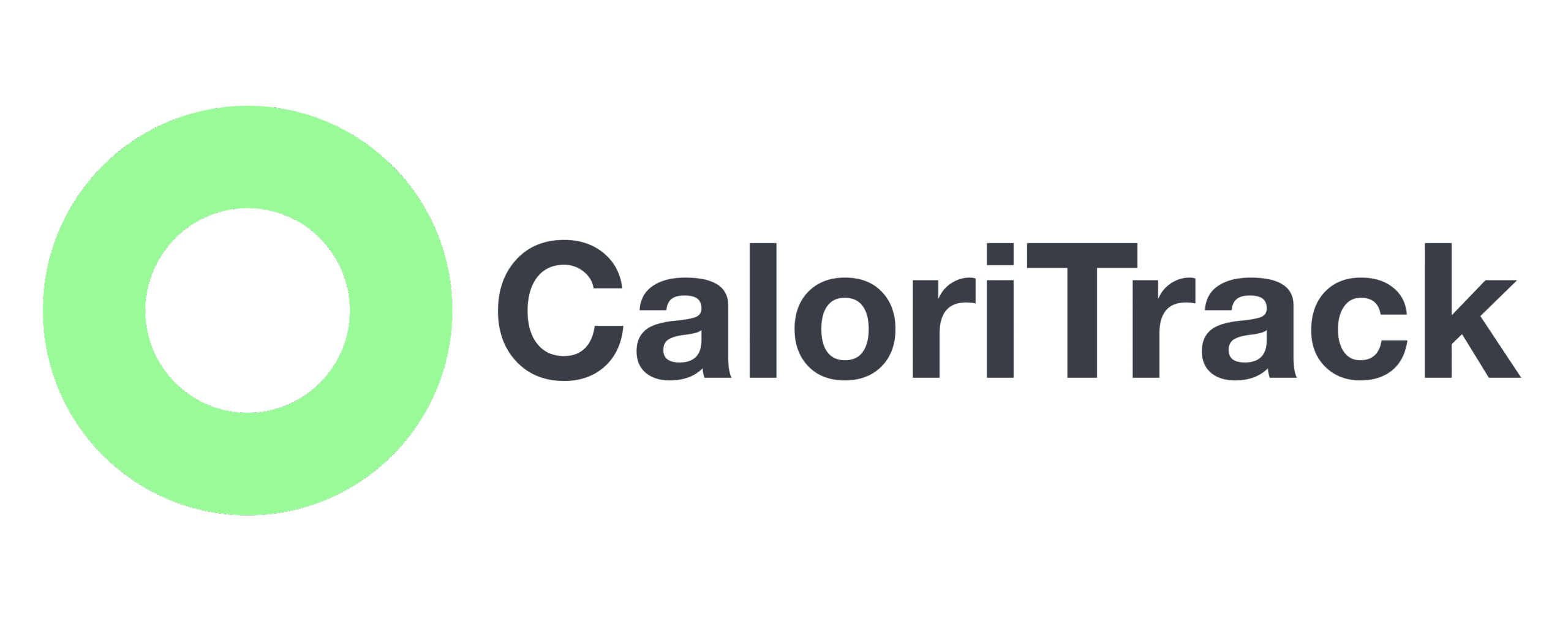
The Indispensable Role of Micronutrients in Human Health: An Exhaustive Guide to Vitamins and Minerals
Introduction: The Invisible Architects of Health
Defining the Nutritional Landscape
In the vast field of human nutrition, nutrients are fundamentally classified according to the quantity the body requires. This distinction gives rise to two main categories: macronutrients and micronutrients. Macronutrients, which include carbohydrates, proteins, and fats, are needed in large amounts, measured in grams, and constitute the body’s primary source of energy, as well as providing the building blocks for tissue growth and repair. In contrast, micronutrients, which comprise vitamins and minerals, are required in tiny amounts, often in the order of milligrams (mg) or micrograms (µg). Despite their low concentration, their role is absolutely critical. They do not provide energy directly but are indispensable for the body to carry out a myriad of essential metabolic and physiological processes.
The quantitative difference between these two groups of nutrients conceals a profound functional truth. The absence of a few micrograms of a key micronutrient can halt or impair entire metabolic pathways that process kilograms of macronutrients over time. This dynamic can be compared to the principle of “a small key for a large door”: the key (the micronutrient) is tiny compared to the door (the metabolic pathway), but without it, the door remains closed, and access to the energy and vital functions provided by macronutrients is blocked. This metabolic vulnerability underscores why a seemingly minor dietary omission can have profound systemic health consequences.
The Concept of “Essentiality”
The term “essential nutrient” refers to a substance that the body cannot synthesize on its own, or not in sufficient quantities to maintain health, and which must, therefore, be obtained through diet. Vitamins and minerals are, by definition, essential nutrients. Their absence from the diet inevitably leads to deficiency diseases, impaired physiological functions, and can ultimately compromise life. This concept is the cornerstone of micronutrient science and guides dietary recommendations worldwide.
The nature of these deficiencies often leads to a global phenomenon known as “hidden hunger.” Unlike starvation caused by a lack of macronutrients, which manifests with obvious weight loss and lack of energy, micronutrient deficiencies can be subclinical and present with chronic, non-specific symptoms such as fatigue, weakened immune function, or reduced mental clarity. This subtlety makes hidden hunger a formidable public health challenge, as it can silently undermine the potential of entire populations without the alarm bells of famine. Organizations like the World Health Organization (WHO) recognize that these deficiencies, though invisible, impose a disproportionate burden on low- and middle-income countries, affecting educational development, labor productivity, and overall health.
Overview of Micronutrient Classification
Micronutrients are divided into two broad classes: vitamins and minerals. Vitamins are organic compounds, meaning they contain carbon and are produced by plants or animals. They are easily destroyed by heat, light, or chemical agents. Minerals, on the other hand, are inorganic elements found in soil and water, absorbed by plants or consumed by animals, and they maintain their chemical structure. This report will explore both categories in depth, detailing their classification, biological functions, dietary sources, and the consequences of their deficiency.
Part I: The Vitamins – Catalysts of Life
Chapter 1: A Fundamental Dichotomy: Fat-Soluble vs. Water-Soluble Vitamins
The most fundamental classification of the 13 essential vitamins for humans is based on their solubility, a chemical property that determines how they are absorbed, transported, stored, and excreted in the body. This division into two groups—fat-soluble and water-soluble—has profound implications for nutrition and health.
Mechanisms and Implications
- Fat-Soluble Vitamins (A, D, E, and K): As their name suggests, these vitamins dissolve in fats and oils. Their absorption in the intestinal tract depends on the presence of dietary fat; they are absorbed along with lipids and transported through the body via lipoproteins. One of their most distinctive features is that the body can store them, primarily in the liver and adipose tissues. This storage capacity means it is not strictly necessary to consume them daily. However, this same property creates a significant risk of toxicity (hypervitaminosis) if consumed in excess, especially through supplements, as they can accumulate in the body to harmful levels.
- Water-Soluble Vitamins (Vitamin C and the B-Complex): This group includes vitamin C and the eight B-complex vitamins (B1, B2, B3, B5, B6, B7, B9, and B12). They dissolve in water, allowing them to be absorbed directly into the bloodstream and circulate freely throughout the body. Unlike fat-soluble vitamins, the body does not store them in significant amounts (with the notable exception of vitamin B12, which can be stored in the liver for years). Any excess consumed is typically excreted through urine. This lack of storage means they must be consumed regularly, often daily, to prevent depletion and the onset of deficiencies.
The need for dietary fat for the absorption of vitamins A, D, E, and K illustrates a direct mechanical interdependence between macronutrient intake and micronutrient bioavailability. An extremely low-fat diet, even if it contains foods rich in these vitamins, can induce a functional deficiency simply by preventing their absorption. This reveals that a nutritional approach focusing solely on a food’s micronutrient content, without considering the dietary matrix in which it is found (e.g., the presence of fats), is incomplete and potentially ineffective.
Furthermore, the risk of vitamin toxicity is almost exclusive to fat-soluble vitamins, which is not an arbitrary rule but a direct consequence of their biochemical property of being stored. The human body has evolved efficient mechanisms to excrete excess water-soluble substances but has a limited capacity to regulate the accumulation of lipophilic compounds. This biochemical reality is crucial for guiding safe supplementation practices and debunks the notion that “more is always better” in the context of nutrition, especially for vitamins A and D.
Chapter 2: The Fat-Soluble Vitamins: Stored for Vital Functions
This chapter provides a detailed profile of each of the four fat-soluble vitamins, highlighting their critical functions, main sources, and the consequences of their deficiency.
Vitamin A (Retinoids and Carotenoids)
- Functions: Vitamin A is fundamental for multiple physiological processes. It is an essential component of rhodopsin, the visual pigment in the retina’s photoreceptors, making it indispensable for vision, especially in low-light conditions (night vision). It plays a crucial role in immune function, cell growth, reproduction, and maintaining the integrity of epithelial tissues, such as the skin and mucous membranes lining the respiratory, digestive, and urinary tracts, acting as a first line of defense against infections.
- Sources: Vitamin A exists in two main forms in food. Preformed vitamin A (retinol and its esters) is found in animal-derived foods like liver, eggs, butter, and fortified dairy products. Provitamin A (primarily beta-carotene and other carotenoids) is found in brightly colored fruits and vegetables, such as carrots, sweet potatoes, spinach, broccoli, and mangoes, which the body converts to retinol as needed.
- Deficiency: Vitamin A deficiency is a major public health problem in many parts of the world. Its earliest manifestation is night blindness. Prolonged deficiency can lead to xerophthalmia, a condition characterized by dryness of the cornea and conjunctiva which, if untreated, can cause permanent blindness. In fact, it is the leading cause of preventable childhood blindness worldwide. The deficiency also increases the severity and mortality of common infections like measles and diarrheal diseases.
Vitamin D (Calciferol)
- Functions: Although classified as a vitamin, vitamin D functions more like a prohormone. Its best-known and most studied function is the regulation of calcium and phosphorus homeostasis, facilitating calcium absorption in the intestine and its mobilization from bone, which is essential for forming and maintaining a strong, healthy skeleton. Beyond bone health, vitamin D plays a vital role in modulating the immune system, regulating cell growth, and neuromuscular function.
- Sources: The primary source of vitamin D for most people is not diet but endogenous synthesis in the skin upon exposure to ultraviolet B (UVB) radiation from sunlight, hence its nickname “the sunshine vitamin.” Natural dietary sources are limited and include fatty fish (like salmon, mackerel, and tuna), liver, and egg yolks. Many countries fortify foods such as milk, breakfast cereals, and orange juice with vitamin D to help the population meet their needs.
- Deficiency: Vitamin D deficiency is a global pandemic, partly due to lifestyles with limited sun exposure and the use of sunscreen. In children, severe deficiency causes rickets, a disease characterized by the softening and deformation of bones. In adults, it leads to osteomalacia, which causes bone pain and muscle weakness, and significantly contributes to osteoporosis, a condition of brittle, porous bones with a high risk of fractures.
Vitamin E (Tocopherols)
- Functions: Vitamin E is the body’s primary fat-soluble antioxidant. Its main function is to protect cell membranes, especially those rich in polyunsaturated fatty acids, from oxidative damage caused by free radicals. By neutralizing these reactive molecules, vitamin E helps prevent oxidative stress, a process implicated in aging and the development of numerous chronic diseases. It also contributes to immune function and is important for skin and eye health.
- Sources: Vitamin E is predominantly found in fat-rich plant-based foods. Excellent sources include vegetable oils (such as sunflower and safflower oil), nuts (especially almonds), seeds (like sunflower seeds), and wheat germ. It is also found in smaller amounts in green leafy vegetables.
- Deficiency: Vitamin E deficiency is rare in healthy individuals, as it is present in many foods. It is usually associated with diseases that cause fat malabsorption. When it occurs, it can lead to neurological symptoms such as ataxia (loss of control of body movements), peripheral neuropathy, and muscle weakness, due to oxidative damage to nerve cells.
Vitamin K (Phylloquinone and Menaquinones)
- Functions: Vitamin K is absolutely essential for blood clotting. It acts as a cofactor for an enzyme that modifies several proteins, known as clotting factors (such as prothrombin or factor II), enabling them to bind to calcium and participate in the coagulation cascade that stops bleeding. In addition to its role in hemostasis, vitamin K is also important for bone health, as it participates in the carboxylation of osteocalcin, a protein that helps incorporate calcium into the bone matrix.
- Sources: Vitamin K exists in two main forms: phylloquinone (vitamin K1), which is the predominant form in the diet and is found in abundance in green leafy vegetables like spinach, kale, and broccoli; and menaquinones (vitamin K2), which are synthesized by bacteria in the gastrointestinal tract and are also found in fermented foods and some animal products.
- Deficiency: Vitamin K deficiency is uncommon in healthy adults, but newborns are particularly vulnerable. A deficiency leads to defective blood clotting, which can cause spontaneous bleeding, easy bruising, and prolonged bleeding after an injury.
Table 1: Profile of Fat-Soluble Vitamins
| Vitamin | Key Functions | Main Dietary Sources | Key Deficiency Symptoms/Syndromes |
| Vitamin A | Vision (especially night), immune function, cell growth, skin and mucous membrane integrity. | Liver, dairy, eggs (retinol); carrots, sweet potatoes, spinach (carotenoids). | Night blindness, xerophthalmia (dry eyes), increased susceptibility to infections. |
| Vitamin D | Calcium and phosphorus absorption, bone health, immune system modulation. | Sun exposure, fatty fish (salmon, mackerel), fortified milk and cereals. | Rickets (in children), osteomalacia and osteoporosis (in adults). |
| Vitamin E | Primary fat-soluble antioxidant, protects cell membranes from oxidative damage. | Nuts (almonds), seeds (sunflower), vegetable oils, wheat germ. | Rare; can cause neurological damage, muscle weakness. |
| Vitamin K | Blood clotting (synthesis of clotting factors), bone health. | Green leafy vegetables (spinach, kale), broccoli; synthesized by gut bacteria. | Rare; defective clotting, tendency for bruising and hemorrhaging. |
Exportar a Hojas de cálculo
Chapter 3: The Water-Soluble Vitamins: Daily Requirements for Metabolic Precision
This group of water-soluble vitamins plays crucial catalytic roles in cellular metabolism. Given their limited storage capacity, regular intake is essential for maintaining health.
Vitamin C (Ascorbic Acid)
- Functions: Vitamin C is a potent water-soluble antioxidant that protects vital molecules like proteins, lipids, and nucleic acids from free radical damage. It is an essential cofactor for enzymes involved in the synthesis of collagen, the main structural protein of connective tissue, making it indispensable for the health of skin, blood vessels, bones, and gums, as well as for wound healing. It also plays an important role in immune function and significantly enhances the absorption of non-heme iron (from plant sources) in the gut.
- Sources: Vitamin C is found exclusively in plant-based foods. The richest sources include citrus fruits (oranges, lemons), bell peppers, strawberries, broccoli, kiwi, and tomatoes.
- Deficiency: Severe and prolonged vitamin C deficiency causes scurvy, a disease historically associated with long sea voyages. Symptoms include fatigue, inflammation and bleeding of the gums, joint pain, poor wound healing, and easy bruising. Although scurvy is rare in developed countries, suboptimal vitamin C intake can weaken the immune system and increase fatigue.
The B-Complex Vitamins: The Metabolic Engine Room
The eight B-complex vitamins, though chemically distinct, often coexist in the same foods and share interrelated functions. Their most important collective role is to act as coenzymes in energy metabolism, helping cells convert carbohydrates, fats, and proteins from food into ATP, the body’s energy currency.
- B1 (Thiamine): Essential for carbohydrate metabolism and the proper functioning of the nervous system. Found in whole grains, legumes, and pork.
- B2 (Riboflavin): Participates in energy production and the metabolism of fats, drugs, and steroids. It is important for skin health and vision. Main sources are dairy products, eggs, and organ meats.
- B3 (Niacin): Crucial for energy production from food. It is also important for the health of the skin, nervous system, and digestive system. Found in meat, fish, poultry, and legumes.
- B5 (Pantothenic Acid): A component of coenzyme A, which is fundamental for fatty acid metabolism and energy production. It is widely distributed in almost all foods.
- B6 (Pyridoxine): Involved in over 100 enzyme reactions, primarily related to protein and amino acid metabolism. It is also necessary for the formation of red blood cells and brain function. Found in meat, fish, poultry, potatoes, and non-citrus fruits.
- B7 (Biotin): Acts as a coenzyme in the metabolism of carbohydrates, fats, and proteins. Found in eggs, almonds, spinach, and sweet potatoes.
- B9 (Folate/Folic Acid): Vitally important for DNA and RNA synthesis, and therefore for cell division and growth. It is essential for the formation of red blood cells. Its role in preventing neural tube defects (like spina bifida) in the fetus is of utmost public health importance, leading to mandatory fortification of grains in many countries. Natural sources (folate) include dark green leafy vegetables, legumes, and liver. Folic acid is the synthetic form used in supplements and fortified foods.
- B12 (Cobalamin): Essential for red blood cell formation, neurological function, and DNA synthesis. A unique feature of vitamin B12 is that it is found almost exclusively in animal-derived foods (meat, fish, eggs, dairy). This makes deficiency a significant concern for strict vegetarians and vegans, who may need supplements or fortified foods.
B-Complex Deficiencies: Deficiencies in folate and vitamin B12 can cause megaloblastic anemia, a condition where the bone marrow produces abnormally large, immature red blood cells. Vitamin B12 deficiency is particularly dangerous because it can also cause severe and often irreversible neurological damage, manifesting with symptoms like numbness and tingling in hands and feet, balance problems, confusion, and memory loss.
Table 2: Profile of Water-Soluble Vitamins
| Vitamin | Key Coenzymatic/Metabolic Role | Main Dietary Sources | Key Deficiency Symptoms |
| Vitamin C | Collagen synthesis, antioxidant, iron absorption. | Citrus fruits, bell peppers, strawberries, broccoli. | Scurvy (bleeding gums, poor healing). |
| B1 (Thiamine) | Carbohydrate metabolism, nerve function. | Whole grains, pork, legumes. | Beriberi (affects heart and nervous system). |
| B2 (Riboflavin) | Energy production, fat metabolism. | Dairy products, eggs, organ meats, green leafy vegetables. | Skin lesions (cheilosis), tongue inflammation. |
| B3 (Niacin) | Energy production, skin and nerve health. | Meat, fish, poultry, legumes, enriched cereals. | Pellagra (dermatitis, diarrhea, dementia). |
| B6 (Pyridoxine) | Protein and amino acid metabolism, red blood cell formation. | Meat, fish, poultry, potatoes, fruits. | Anemia, dermatitis, confusion. |
| B9 (Folate) | DNA synthesis, new cell formation (red blood cells). | Green leafy vegetables, legumes, liver, fortified cereals. | Megaloblastic anemia, neural tube defects in fetus. |
| B12 (Cobalamin) | Red blood cell formation, neurological function. | Animal-derived foods (meat, fish, eggs, dairy). | Megaloblastic anemia, irreversible neurological damage. |
Exportar a Hojas de cálculo
Part II: The Minerals – Structural and Functional Cornerstones
Chapter 4: Classification of Essential Minerals: Macrominerals and Trace Elements
Unlike vitamins, minerals are simple inorganic elements. Their classification in human nutrition is not based on their function but on the daily amount required by the body to maintain homeostasis and health.
A Quantitative Distinction
- Macrominerals: These are minerals the body needs in relatively large amounts, defined as more than 100 milligrams (mg) per day. This group includes calcium, phosphorus, magnesium, sodium, potassium, chloride, and sulfur.
- Trace Elements: These are minerals required in much smaller amounts, generally less than 100 mg per day, and often in the microgram (µg) range. This group includes iron, zinc, iodine, copper, manganese, fluoride, selenium, chromium, and molybdenum, among others.
It is crucial to understand that this quantitative classification does not reflect the biological importance of the minerals. The amount required is not an indicator of the criticality of their function. A severe deficiency of a trace element like iodine, of which only 150 µg per day is needed, can have far more devastating consequences, such as irreversible brain damage, than a mild deficiency of a macromineral like calcium. This distinction is crucial to avoid the false impression that macrominerals are “more important” than trace elements. Both are equally essential for life; the only difference lies in the scale of their need.
Chapter 5: The Macrominerals: The Body’s Building Blocks
Macrominerals play fundamental roles, from providing the rigid structure of our skeleton to maintaining the delicate fluid balance and transmission of nerve impulses.
Calcium and Phosphorus
- Functions: Calcium and phosphorus are the two most abundant minerals in the human body and work in close collaboration. Over 99% of the body’s calcium and about 85% of its phosphorus are found in bones and teeth, where they form hydroxyapatite crystals, the compound that gives hardness and rigidity to the skeleton. Beyond its structural function, calcium is vital for muscle contraction, nerve impulse transmission, blood clotting, and hormone secretion. Phosphorus is an essential component of phospholipids in cell membranes, nucleic acids (DNA and RNA), and adenosine triphosphate (ATP), the body’s main energy storage molecule.
- Sources: The best-known sources of calcium are dairy products (milk, yogurt, cheese). Other good sources include dark green leafy vegetables (like kale and broccoli), canned sardines and salmon (with bones), and fortified foods. Phosphorus is widely found in protein-rich foods such as meat, poultry, fish, eggs, and dairy products, as well as in whole grains.
- Deficiency: Inadequate long-term calcium intake is a major risk factor for osteoporosis, a disease that weakens bones and makes them susceptible to fractures. Acute hypocalcemia (low blood calcium levels) can cause muscle cramps, spasms, and cardiac arrhythmias.
Magnesium
- Functions: Magnesium is a crucial cofactor in over 300 enzyme systems that regulate various biochemical reactions in the body. It participates in energy production, protein and DNA synthesis, blood pressure regulation, blood glucose control, and nerve and muscle function.
- Sources: Magnesium is found mainly in plant-based foods. Excellent sources include nuts (almonds, cashews), seeds (pumpkin), legumes (black beans, lentils), green leafy vegetables (spinach), whole grains, and dark chocolate.
- Deficiency: Magnesium deficiency can manifest with symptoms such as loss of appetite, nausea, fatigue, and weakness. A more severe deficiency can lead to muscle cramps, numbness, tingling, cardiac arrhythmias, and seizures.
The Primary Electrolytes (Sodium, Potassium, Chloride)
- Functions: Sodium, potassium, and chloride are the body’s main electrolytes, minerals that carry an electric charge when dissolved in body fluids. They work together to maintain fluid balance, osmotic pressure between the inside and outside of cells, and acid-base balance. They are absolutely essential for the transmission of nerve impulses and muscle contraction, including the heartbeat. Potassium is the primary intracellular cation, while sodium is the primary extracellular cation.
- Sources: The main source of sodium and chloride in the modern diet is table salt (sodium chloride) and processed foods. Potassium is found in abundance in fruits (bananas, oranges), vegetables (potatoes, spinach), legumes, and dairy products.
Table 3: Profile of Essential Macrominerals
| Mineral | Primary Physiological Roles | Main Dietary Sources | Key Deficiency Symptoms |
| Calcium (Ca) | Structure of bones and teeth, muscle contraction, nerve transmission, clotting. | Dairy products, green leafy vegetables, canned fish with bones, fortified foods. | Osteoporosis (long-term), muscle cramps, spasms. |
| Phosphorus (P) | Structure of bones and teeth, component of ATP (energy) and cell membranes. | Meat, fish, poultry, eggs, dairy, whole grains. | Rare; muscle weakness, bone pain. |
| Magnesium (Mg) | Cofactor in >300 enzymes, energy production, nerve and muscle function, blood pressure regulation. | Nuts, seeds, legumes, green leafy vegetables, whole grains. | Fatigue, weakness, muscle cramps, arrhythmias. |
| Sodium (Na) | Fluid balance, nerve impulse transmission, muscle contraction. | Table salt, processed foods, meats, seafood. | Rare from diet; can occur from excessive sweating (cramps). |
| Potassium (K) | Fluid balance, nerve impulse transmission, heart function. | Fruits (bananas), vegetables (potatoes), legumes, milk. | Muscle weakness, paralysis, cardiac arrhythmias. |
| Chloride (Cl) | Fluid balance, production of stomach acid. | Table salt, processed foods. | Rare; can cause disturbances in acid-base balance. |
Exportar a Hojas de cálculo
Chapter 6: The Essential Trace Elements: Small Amounts, Profound Impact
Although needed in minuscule amounts, trace elements are powerful actors in human biochemistry, playing catalytic and structural roles that are irreplaceable.
Iron
- Functions: Iron’s most well-known function is its central role in oxygen transport. It is an essential component of hemoglobin, the protein in red blood cells that carries oxygen from the lungs to the rest of the body, and of myoglobin, which stores oxygen in muscles. It is also crucial for growth, development, normal cellular functioning, and the synthesis of some hormones.
- Sources: Dietary iron comes in two forms: heme iron, found in animal-derived foods like red meat, poultry, and fish, which is very efficiently absorbed; and non-heme iron, found in plant-based foods like legumes, spinach, and fortified cereals, whose absorption is less efficient.
- Deficiency: Iron deficiency is the most common and widespread nutritional deficiency in the world, affecting billions of people. It leads to iron-deficiency anemia, characterized by extreme fatigue, weakness, pale skin, shortness of breath, dizziness, and cold hands and feet. In children, it can severely impair cognitive development.
Zinc
- Functions: Zinc is a versatile mineral involved in countless aspects of cellular metabolism. It is a cofactor for hundreds of enzymes involved in protein synthesis, gene expression, immune function, wound healing, and the perception of taste and smell.
- Sources: The richest sources of zinc are oysters, red meat, and poultry. Other good sources include beans, nuts, whole grains, and dairy products.
- Deficiency: Symptoms of zinc deficiency include a weakened immune system (resulting in more frequent infections), hair loss, diarrhea, loss of appetite, slow wound healing, and, in children, delayed growth and development.
Iodine
- Functions: The only known function of iodine in the body is to be an indispensable component of the thyroid hormones, thyroxine (T4) and triiodothyronine (T3). These hormones regulate basal metabolism, growth, and development, especially that of the brain.
- Sources: The main sources of iodine are seafood, fish, dairy products, and, crucially for public health, iodized salt.
- Deficiency: Iodine deficiency causes a spectrum of disorders. The most visible manifestation is goiter, an enlargement of the thyroid gland. However, the most devastating consequence occurs during pregnancy and early childhood, where severe deficiency can cause irreversible brain damage and delayed physical and mental development known as cretinism. Universal salt iodization is one of the most successful public health interventions in history.
Selenium, Copper, and Manganese
- Functions: These three trace elements are essential components of various antioxidant enzymes that protect cells from oxidative damage. Selenium is a key component of glutathione peroxidases. Copper and manganese are cofactors for superoxide dismutase enzymes. Copper is also necessary for iron metabolism and the formation of connective tissue.
- Sources: Selenium is found in Brazil nuts, seafood, and meats. Copper is found in organ meats, seafood, and nuts. Manganese is found in whole grains, nuts, and legumes.
Table 4: Profile of Key Trace Elements
| Element | Primary Biological Function | Main Dietary Sources | Global Health Relevance/Deficiency |
| Iron (Fe) | Oxygen transport (component of hemoglobin). | Red meat, poultry, fish (heme); legumes, spinach (non-heme). | The world’s most common nutritional deficiency; causes iron-deficiency anemia. |
| Zinc (Zn) | Immune function, wound healing, cofactor for hundreds of enzymes. | Oysters, red meat, poultry, beans, nuts. | Deficiency weakens immunity and stunts growth in children. |
| Iodine (I) | Synthesis of thyroid hormones (metabolism regulation). | Iodized salt, seafood, dairy products. | Deficiency causes goiter and irreversible brain damage (cretinism). |
| Selenium (Se) | Component of antioxidant enzymes (glutathione peroxidase). | Brazil nuts, seafood, meats. | Deficiency may contribute to heart disease and weaken immunity. |
| Copper (Cu) | Iron metabolism, connective tissue formation, antioxidant function. | Organ meats, seafood, nuts, seeds. | Deficiency is rare; can cause anemia and neurological problems. |
Exportar a Hojas de cálculo
Part III: Synthesis and Practical Application
Chapter 7: The Network of Interactions: Synergy and Antagonism of Micronutrients
The study of micronutrients cannot be limited to their individual analysis. The human body is a complex biochemical system where nutrients constantly interact, affecting each other’s absorption, metabolism, and function. Understanding these interactions is key to optimal nutrition.
Enhancing Bioavailability
The bioavailability of a nutrient—the proportion that is absorbed and utilized—is not an intrinsic property of the food but depends on the context of the entire meal. This biochemical reality shows that a holistic dietary approach is superior to a reductionist one. The nutritional value of iron in a plate of lentils, for example, changes drastically if consumed alongside a red bell pepper rich in vitamin C. This underscores the importance of planning meals by considering food combinations, not just isolated nutrient counts.
- Vitamin C and Iron: One of the most well-known synergies is between vitamin C and non-heme iron (from plant sources). Vitamin C significantly enhances the absorption of this type of iron by converting it from its ferric form (Fe³⁺) to the ferrous form (Fe²⁺), which is much more soluble and easily absorbed by intestinal cells.
- Vitamin D and Calcium: The relationship between vitamin D and calcium is fundamental. Vitamin D is essential for the active absorption of calcium in the intestine. Without enough vitamin D, the body can only absorb a small fraction of dietary calcium, regardless of the amount consumed.
- Folate and Vitamin B12: These two B-complex vitamins are intimately linked in metabolism. Both are necessary for DNA synthesis and the maturation of red blood cells. A deficiency in either can lead to megaloblastic anemia. Additionally, they work together in the metabolic pathway that converts homocysteine to methionine.
The Importance of Balance
Just as there are synergies, there are also antagonisms, where an excess of one mineral can interfere with the absorption of another. For example, high doses of zinc can reduce copper absorption, and an excess of calcium can inhibit iron absorption. This reinforces the idea that optimal health is achieved not by maximizing the intake of individual nutrients but by maintaining a proper balance through a varied diet.
Chapter 8: A Plan for Micronutrient Sufficiency: Dietary Strategies
Achieving an adequate intake of all essential micronutrients is an attainable goal through informed dietary strategies.
The Primacy of a Varied Diet
The safest and most effective way to obtain the full spectrum of vitamins and minerals, and to benefit from their complex synergistic interactions, is to consume a diverse and balanced diet rich in whole, minimally processed foods. A colorful diet, including a wide variety of fruits, vegetables, whole grains, lean proteins, and healthy fats, is the best guarantee against deficiencies.
Food Groups as Nutrient Clusters
Different food groups tend to provide characteristic clusters of micronutrients, which facilitates planning a complete diet:
- Dairy Products: Primary sources of calcium, phosphorus, and vitamin B2.
- Green Leafy Vegetables: Rich in vitamins K, A (as carotenoids), C, folate, and magnesium.
- Meats, Poultry, and Fish: Main sources of heme iron, zinc, and vitamin B12.
- Legumes and Nuts: Good sources of non-heme iron, magnesium, zinc, and B-complex vitamins.
- Colorful Fruits and Vegetables: Abundant in vitamins A and C and potassium.
Considerations for Specific Populations
Certain life stages or dietary choices require special attention to micronutrient intake:
- Vegetarians and Vegans: They are at high risk of vitamin B12 deficiency, as it is not found in plant-based foods. Supplementation or consumption of fortified foods is often necessary. They should also pay attention to their non-heme iron intake, combining it with sources of vitamin C to enhance absorption.
- Pregnant Women: Their needs for certain micronutrients increase dramatically. Folate is crucial before and during the early weeks of pregnancy to prevent neural tube defects. Iron is needed to support the increased blood volume, and iodine is vital for the fetus’s brain development.
- Older Adults: They may be at higher risk for deficiencies of vitamin D (due to reduced synthesis in the skin and less sun exposure) and vitamin B12 (due to lower production of stomach acid, which is necessary for its absorption).
Conclusion: Micronutrients as the Foundation of Lifelong Health
This report has outlined the fundamental role that micronutrients play in human health. Although required in minuscule amounts, vitamins and minerals act as catalysts, regulators, and structural components in virtually all biological processes. They are not a source of energy, but they are the key that allows the body to unlock energy from macronutrients, build and maintain tissues, defend against disease, and ensure proper development and function from conception to old age.
The central message emerging from this comprehensive analysis is clear and consistent: the most effective and safest strategy to ensure micronutrient sufficiency is the adoption of a balanced, varied diet composed mainly of whole foods. This approach not only provides the full range of essential vitamins and minerals but also leverages the complex synergies that exist between them, optimizing their bioavailability and biological function.
From a public health perspective, the challenge of “hidden hunger” remains a priority global concern. Deficiencies in micronutrients, especially iron, iodine, and vitamin A, continue to affect billions of people, undermining health, productivity, and human potential. Strategies such as large-scale food fortification—like salt iodization, the addition of folic acid to grain products, and the fortification of milk with vitamin D—have proven to be extraordinarily successful interventions. These initiatives connect the science of individual nutrition with its large-scale social impact, demonstrating that investing in micronutrient sufficiency is investing in the health and prosperity of present and future generations.
Works Cited
- Nutrientes: macronutrientes y micronutrientes – Nestlé Family Club, accessed on: August 15, 2025, https://www.nestlefamilyclub.es/articulo/que-son-los-nutrientes-macronutrientes-y-micronutrientes
- www.nestlefamilyclub.es, accessed on: August 15, 2025, https://www.nestlefamilyclub.es/articulo/que-son-los-nutrientes-macronutrientes-y-micronutrientes#:~:text=Podemos%20clasificar%20los%20nutrientes%20seg%C3%BAn,y%20no%20nos%20aportan%20energ%C3%ADa.
- ¿Qué son los macronutrientes y los micronutrientes? – NHCO Nutrition, accessed on: August 15, 2025, https://nhco-nutrition.es/2023/10/04/que-son-los-macronutrientes-y-los-micronutrientes/
- Micronutrientes y macronutrientes: definición y ejemplos – Occident, accessed on: August 15, 2025, https://www.occident.com/blog/micronutrientes-macronutrientes-definicion-ejemplos/
- 25 Ejemplos de Macronutrientes y Micronutrientes, accessed on: August 15, 2025, https://www.ejemplos.co/25-ejemplos-de-macronutrientes-y-micronutrientes/
- Vitamins and Minerals – Nutritional Disorders – MSD Manual Consumer Version, accessed on: August 15, 2025, https://www.msdmanuals.com/es/hogar/trastornos-nutricionales/introducci%C3%B3n-a-la-nutrici%C3%B3n/vitaminas-y-minerales
- Micronutrients, World Health Organization, accessed on: August 15, 2025, https://www.who.int/es/health-topics/micronutrients
- REGULATORY IMPACT ANALYSIS – PREVENTION AND CONTROL OF MICRONUTRIENT DEFICIENCIES IN COLOMBIA. Ministry of Health, accessed on: August 15, 2025, https://www.minsalud.gov.co/Normativa/Documents/AIN-Deficiencia%20de%20micronutrientes%20.pdf
- Micronutrientes: vitaminas y minerales – Clínica Las Condes, accessed on: August 15, 2025, https://www.clinicalascondes.cl/CENTROS-Y-ESPECIALIDADES/Centros/Centro-de-Nutricion/Nutricion/Micronutrientes
- Micronutrientes: para qué sirven y cómo se clasifican – Evolution Advance, accessed on: August 15, 2025, https://www.evolutionadvance.com/blogs/bienestar/micronutrientes-para-que-sirven-y-como-se-clasifican
- Vitamins and Minerals (for Teens) | Nemours KidsHealth, accessed on: August 15, 2025, https://kidshealth.org/es/teens/vitamins-minerals.html
- Vitamins: MedlinePlus Medical Encyclopedia, accessed on: August 15, 2025, https://medlineplus.gov/spanish/ency/article/002399.htm
- Las indispensables vitaminas | Secretariat of Health – Government of Mexico, accessed on: August 15, 2025, https://www.gob.mx/salud/articulos/las-indispensables-vitaminas
- Vitaminas Necesarias para El Cuerpo – Hospital Centro Médico del Caribe, accessed on: August 15, 2025, https://centromedicodelcaribe.com/noticias/2020/vitaminas-necesarias-para-el-cuerpo
- Vitamin D: MedlinePlus Medical Encyclopedia, accessed on: August 15, 2025, https://medlineplus.gov/spanish/ency/article/002405.htm
- Vitamin D Deficiency: MedlinePlus, accessed on: August 15, 2025, https://medlineplus.gov/spanish/vitaminddeficiency.html
- Vitamins: MedlinePlus, accessed on: August 15, 2025, https://medlineplus.gov/spanish/vitamins.html
- Essential Vitamins to Improve Your Health and Wellness – AltaMed, accessed on: August 15, 2025, https://www.altamed.org/es/article/vitaminas-esenciales-para-mejorar-su-salud-y-bienestar
- Vitamins: Functions and Sources | Cigna, accessed on: August 15, 2025, https://www.cigna.com/es-us/knowledge-center/hw/vitaminas-ta3868
- Tipos y propiedades de los micronutrientes | Supradyn® España, accessed on: August 15, 2025, https://www.supradyn.es/vitaminas-y-minerales/tipos-y-propiedades-micronutrientes
- ¿Cuáles son las vitaminas más importantes para tu organismo? – HSN Store, accessed on: August 15, 2025, https://www.hsnstore.com/blog/nutricion/vitaminas/las-mas-importantes-para-el-organismo/
- 5 signs that warn of a possible nutritional deficiency – AARP, accessed on: August 15, 2025, https://www.aarp.org/espanol/salud/enfermedades-y-tratamientos/info-2023/sintomas-de-deficiencia-nutricional.html
- Micronutrientes y macronutrientes: ¿cómo actúan? | Blog UE – Universidad Europea, accessed on: August 15, 2025, https://universidadeuropea.com/blog/micronutrientes-macronutrientes/
- Vitamin K: MedlinePlus Medical Encyclopedia, accessed on: August 15, 2025, https://medlineplus.gov/spanish/ency/article/002407.htm
- Vitamin deficiency anemia – Symptoms & causes – Mayo Clinic, accessed on: August 15, 2025, https://www.mayoclinic.org/es/diseases-conditions/vitamin-deficiency-anemia/symptoms-causes/syc-20355025
- Anemia due to vitamin B12 deficiency: MedlinePlus Medical Encyclopedia, accessed on: August 15, 2025, https://medlineplus.gov/spanish/ency/article/000574.htm
- Anemia – Vitamin B12 Deficiency Anemia | NHLBI, NIH, accessed on: August 15, 2025, https://www.nhlbi.nih.gov/es/salud/anemia/anemia-por-deficiencia-de-vitamina-b12
- Minerals in diet: MedlinePlus, accessed on: August 15, 2025, https://medlineplus.gov/spanish/minerals.html
- medlineplus.gov, accessed on: August 15, 2025, https://medlineplus.gov/spanish/minerals.html#:~:text=Estos%20incluyen%20calcio%2C%20f%C3%B3sforo%2C%20magnesio,una%20amplia%20variedad%20de%20alimentos.
- Minerals and the Body | Oklahoma State University, accessed on: August 15, 2025, https://extension.okstate.edu/fact-sheets/minerales-y-el-cuerpo.html
- Chapter 10: Minerals, Food and Agriculture Organization of the United Nations, accessed on: August 15, 2025, https://www.fao.org/4/w0073s/w0073s0e.htm
- Mineral and Bone Disorder in Chronic Kidney Disease, National Institute of Diabetes and Digestive and Kidney Diseases, accessed on: August 15, 2025, https://www.niddk.nih.gov/health-information/informacion-de-la-salud/enfermedades-rinones/alteracion-metabolismo-mineral-oseo
- Deficiencia de micronutrimentos. Circunstancia actual en la vida temprana y su repercusión en la salud y la economía – Acta Pediátrica de México, accessed on: August 15, 2025, https://ojs.actapediatrica.org.mx/index.php/APM/article/view/2835/1533
- The best natural sources of magnesium and how much to consume per day, Infobae, accessed on: August 15, 2025, https://www.infobae.com/salud/2025/08/11/las-mejores-fuentes-naturales-de-magnesio-y-cuanto-consumir-al-dia/
- Iron deficiency anemia – Symptoms and causes – Mayo Clinic, accessed on: August 15, 2025, https://www.mayoclinic.org/es/diseases-conditions/iron-deficiency-anemia/symptoms-causes/syc-20355034
- Zinc – Fact Sheet for Health Professionals – NIH Office of Dietary Supplements, accessed on: August 15, 2025, https://ods.od.nih.gov/factsheets/Zinc-DatosEnEspanol/
- COMMONLY USED VITAMINS AND MINERALS: EFFICACY AND SAFETY – Euskadi.eus, accessed on: August 15, 2025, https://www.euskadi.eus/contenidos/informacion/cevime_infac_2023/es_def/adjuntos/Boleti-n-INFAC_Vol_31_4_VITAMINAS-MINERALES.pdf
- Malnutrition, World Health Organization, accessed on: August 15, 2025, https://www.who.int/es/news-room/fact-sheets/detail/malnutrition














